I mentioned in the question that I was overthinking the problem. The main reason for that is because the problem was bigger than the question. The problem was, not only did I not know how to control the framebuffer, I didn't know how to create one. There are so many options and none of the web resources seemed to specifically address what I was trying do, so I struggled with it. If you're also struggling with how to move your selection routine to a unique color scheme with a persistent buffer, or are just at a complete loss as to framebuffers and offscreen rendering, read on.
I've got my OpenGL canvas defined as a class, and I needed a "Selection Buffer Object." I added this to the private members of the class.
unsigned int sbo;
unsigned int sbo_pixels;
unsigned int sbo_depth;
bool sbo_dirty;
void setSelectionBuffer();
In both my resize handler and OpenGL initialization I set the dirty flag for the selection buffer.
sbo_dirty = true;
At the begining of my mouse handler I check for the dirty bit and setSelectionBuffer(); if appropriate.
if(sbo_dirty) setSelectionBuffer();
This tackles my initial concerns about multiple delete/recreates of the buffer. The selection buffer isn't resized until the mouse pointer reenters the client area, after resizing the window. Now I just had to figure out the buffer...
void BFX_Canvas::setSelectionBuffer()
{
if(sbo != 0) // delete current selection buffer if it exists
{
glDeleteFramebuffersEXT(1, &sbo);
glDeleteRenderbuffersEXT(1, &sbo_depth);
glDeleteRenderbuffersEXT(1, &sbo_pixels);
sbo = 0;
}
// create depth renderbuffer
glGenRenderbuffersEXT(1, &sbo_depth);
// bind to new renderbuffer
glBindRenderbufferEXT(GL_RENDERBUFFER_EXT, sbo_depth);
// Set storage for depth component, with width and height of the canvas
glRenderbufferStorageEXT(GL_RENDERBUFFER_EXT, GL_DEPTH_COMPONENT, canvas_width, canvas_height);
// Set it up for framebuffer attachment
glFramebufferRenderbufferEXT(GL_FRAMEBUFFER_EXT, GL_DEPTH_ATTACHMENT_EXT, GL_RENDERBUFFER_EXT, sbo_depth);
// rebind to default renderbuffer
glBindRenderbufferEXT(GL_RENDERBUFFER_EXT, 0);
// create pixel renderbuffer
glGenRenderbuffersEXT(1, &sbo_pixels);
// bind to new renderbuffer
glBindRenderbufferEXT(GL_RENDERBUFFER_EXT, sbo_pixels);
// Create RGB storage space(you might want RGBA), with width and height of the canvas
glRenderbufferStorageEXT(GL_RENDERBUFFER_EXT, GL_RGB, canvas_width, canvas_height);
// Set it up for framebuffer attachment
glFramebufferRenderbufferEXT(GL_FRAMEBUFFER_EXT, GL_COLOR_ATTACHMENT0_EXT, GL_RENDERBUFFER_EXT, sbo_pixels);
// rebind to default renderbuffer
glBindRenderbufferEXT(GL_RENDERBUFFER_EXT, 0);
// create framebuffer object
glGenFramebuffersEXT(1, &sbo);
// Bind our new framebuffer
glBindFramebufferEXT(GL_FRAMEBUFFER_EXT, sbo);
// Attach our pixel renderbuffer
glFramebufferRenderbufferEXT(GL_FRAMEBUFFER_EXT, GL_COLOR_ATTACHMENT0_EXT, GL_RENDERBUFFER_EXT, sbo_pixels);
// Attach our depth renderbuffer
glFramebufferRenderbufferEXT(GL_FRAMEBUFFER_EXT, GL_DEPTH_ATTACHMENT_EXT, GL_RENDERBUFFER_EXT, sbo_depth);
// Check that the wheels haven't come off
GLenum status = glCheckFramebufferStatusEXT(GL_FRAMEBUFFER_EXT);
if (status != GL_FRAMEBUFFER_COMPLETE_EXT)
{
// something went wrong
// Output an error to the console
cout << "Selection buffer creation failed" << endl;
// restablish a coherent state and return
glBindFramebufferEXT(GL_FRAMEBUFFER_EXT, 0);
sbo_dirty = false;
sbo = 0;
return;
}
// rebind back to default framebuffer
glBindFramebufferEXT(GL_FRAMEBUFFER_EXT, 0);
// cleanup and go home
sbo_dirty = false;
Refresh(); // force a screen draw
}
Then at the end of my render function I test for the sbo, and draw to it if it seems to be ready.
if((sbo) && (!sbo_dirty)) // test that sbo exists and is ready
{
// disable anything that's going to affect color such as...
glDisable(GL_LIGHTING);
glDisable(GL_LINE_SMOOTH);
glDisable(GL_POINT_SMOOTH);
glDisable(GL_POLYGON_SMOOTH);
// bind to our selection buffer
// it inherits current transforms/rotations
glBindFramebufferEXT(GL_FRAMEBUFFER_EXT, sbo);
// clear it
glClear(GL_COLOR_BUFFER_BIT | GL_DEPTH_BUFFER_BIT);
// draw selectables
// for now i'm just drawing my object
if (object) object->draw();
// reenable that stuff from before
glEnable(GL_POLYGON_SMOOTH);
glEnable(GL_POINT_SMOOTH);
glEnable(GL_LINE_SMOOTH);
glEnable(GL_LIGHTING);
// blit to default framebuffer just to see what's going on
// delete this bit once selection is setup and working properly.
glBindFramebufferEXT(GL_READ_FRAMEBUFFER_EXT, sbo);
glBindFramebufferEXT(GL_DRAW_FRAMEBUFFER_EXT, 0);
glBlitFramebufferEXT(0, 0, canvas_width, canvas_height,
0, 0, canvas_width/3, canvas_height/3,
GL_COLOR_BUFFER_BIT, GL_LINEAR);
// We're done here, bind back to default buffer.
glBindFramebufferEXT(GL_FRAMEBUFFER_EXT, 0);
}
That gives me this...

At this point I believe everything is in place to actually draw selectable items to the buffer, and use mouse move events to test for hits. And I've got an onscreen thumbnail to show how bad things are blowing up.
I hope this was as big a help to you, as it would have been to me a week ago. :)
